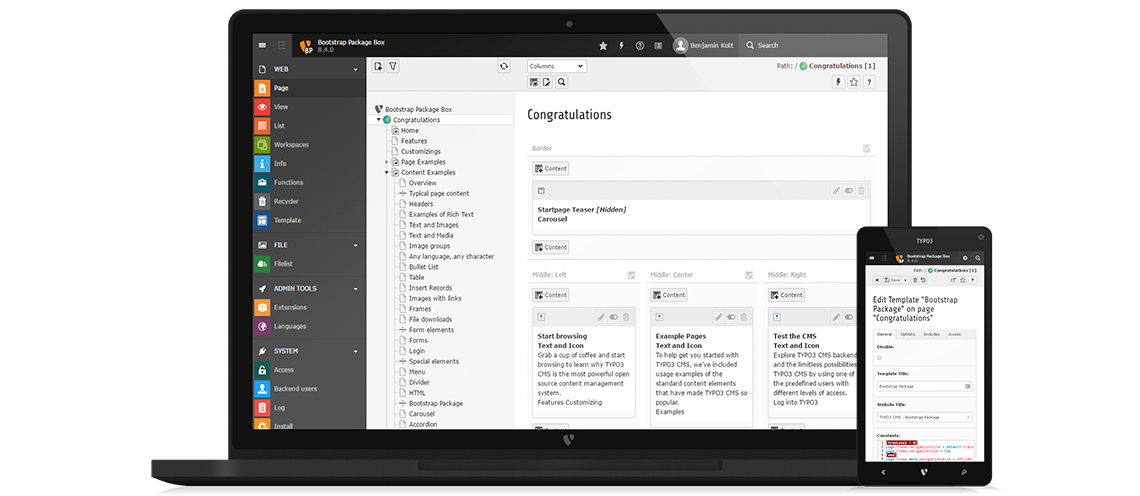Feature Complete Out-of-the-box
TYPO3 is unique in the quantity and quality of features that are part of its core. While there are over 6.000 extensions in the official TYPO3 Extension Repository, the following features are present without installing any community-developed extension.
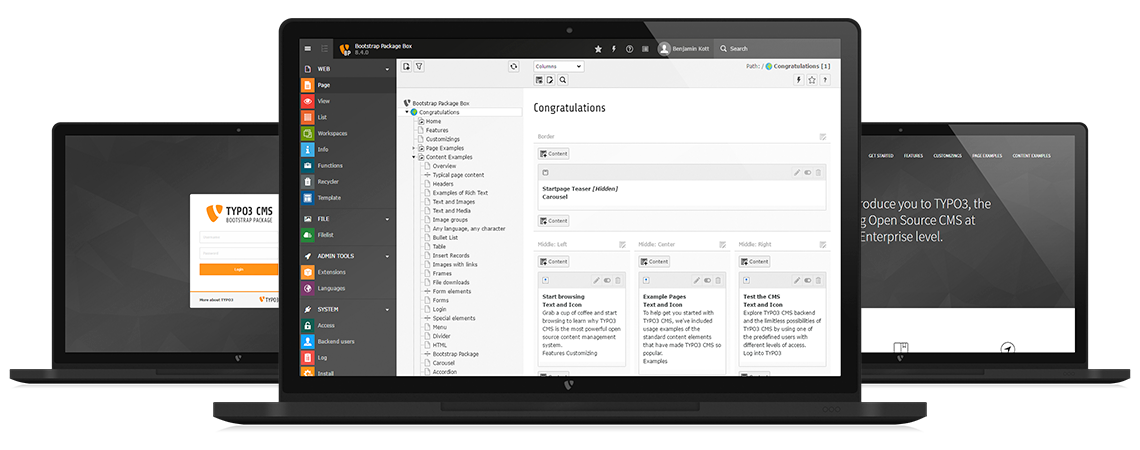
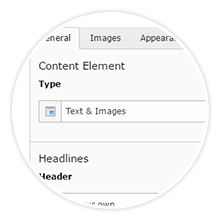
Ease of Use
TYPO3 is built around content management concepts that are intuitive and easy to master. Pages are organized into a hierarchical page tree. Each piece of content is clearly represented in the page module. All records can be accessed with a universal list module. Built-in WYSIWYG editors allow non-technical users to efficiently and effectively manage content.
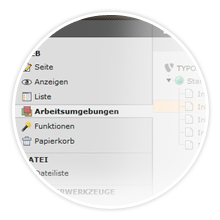
Publishing Content
TYPO3 contains built-in versioning functionality that allows users to revert content to a previous version with ease. TYPO3 also features “workspaces,” which make it possible for users to edit content in one or more draft workspaces, and to confirm editorial approval before content is published.
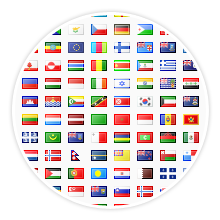
Multi-Language and Multiple Domains
Support for multiple domains within a single TYPO3 installation and for multiple languages are built-in to the TYPO3 core and are integrated at every level of the system’s architecture.
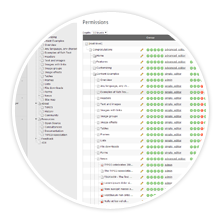
Granular Frontend and Backend Access Rights
All frontend pages and content can be limited to specific user groups. Backend editors can easily be restricted to specific sections of the page tree, modules, and directories in the file system.
Your data - our strength
TYPO3 can be installed on any database based on MySQL/MariaDB, postgreSQL, MSSQL or SQLite2 - due to the underlying database abstraction moving your data from one server to another with only little configuration changes.
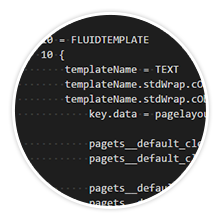
No Design Constraints For Your Web Project
Because the TYPO3 frontend and backend are separate and distinct interfaces, developers have complete and total control of their frontend markup, CSS, and JavaScript, down to the most minute details.
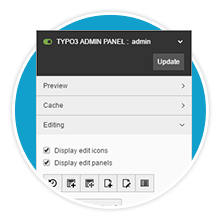
Frontend Editing
While the backend offers complete control over all site content, TYPO3 also includes a frontend editing interface for even faster, more intuitive content management by non-technical editors.
Enterprise Features
In addition to everything one would expect in a sophisticated content management system, TYPO3 also possesses a number of important enterprise features including content-specific caching backends, a database abstraction layer, documented serviced-based APIs for authentication like LDAP and Active Directory, well-defined interfaces for third-party systems integration, reporting tools, a digital asset manager, and an interface for scheduled jobs.
And More...
For a full list of all that the TYPO3 core has to offer, take a look at the feature matrix on typo3.org. Or browse the list of over 6.000 extensions on the TYPO3 extension repository.


